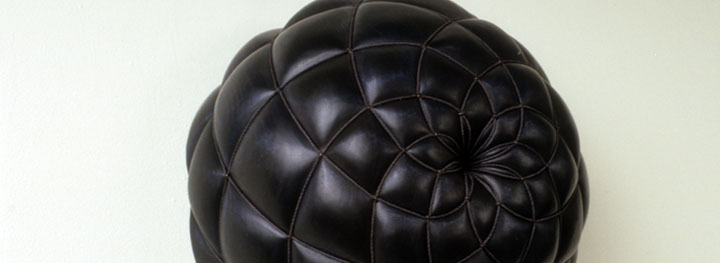Art & Art History
Skew: The Unruly Grid

Gallery 400
400 South Peoria Street, Chicago, IL 60607
Polly Apfelbaum, Michael Banicki, Rochelle Feinstein, Robert Guillot, Paul Kass, Judy Lomberg, Claudia Matzko, Matthew McCaslin, Patrick McGee, Rebecca Morris, Lisa Norton, Mark Ottens, Carla Preiss, Richard Rezac, Ross Rudel, Claude Simard, Linda Stark, David Szafranski, Pam Wilson, and Robin Winters
Skew: The Unruly Grid, curated by Susan Sensemann, includes works by twenty artists from New York, Chicago, Dallas, and Los Angeles. Each artist is engaged in a shifting or reframing of the grid-based geometric formats prevalent in twentieth-century art movements such as Constructivism, Minimalism, Op or Psychedelic Painting, Suprematism, and systematic abstraction. Without aiming at sublimity or nostalgia, these artists conflate syntactical abstraction with commentary that ranges from domestic to social, material to metaphorical. Their paintings skew the geometric grid or use the recurring motif of the grid with a divergent yet coherent set of variations. Bauhausian architecture and design, the mod and psychedelic styles of the sixties and seventies, and the Pattern and Decoration Movement offer order within a structural framework. The cool and reductive rhetoric of Neo-Geo works of the eighties modifies the materiality of painting and further assumes a linguistic hierarchy that neutralizes and/or alters the experiences of making and looking at contemporary art.
The recurring motif of the grid is present through recapitulation, allusion, and parody, and is handled in a variety of ways: relatively orderly, crazily warped, unruly, bent out of shape, subverted, dissolved, arbitrary, organized, logical, methodical, exacting, or finite. The grid is used by some artists because of the neutrality and structure it offers and the way in which the repeated gesture forms an armature that pulls the viewer toward a work. The grid is also used to examine how inconsequential, individual units can together amass unexpected effects. Some artists view the grid as fixed and controlled, while others see it as active and changing.
Some of the artists mock the iconic achievements of modernist work, while reveling in the visual delight that this art can deploy. These artists deflate modernist pretension by equating avant-gardism and kitsch, therefore giving their works a sarcastic edge. They poke fun at formalism’s doctrinaire approach to questions of aesthetic quality. Other artists clearly regard modernism with affection, paying homage to canonical works. These artists want the viewer to look back at the rejuvenating aesthetic possibilities of their art. Their work is not really a matter of appropriation but of allusion.
The artists presented in this exhibition are historically conscientious, yet the works relate to the politics of meaning in a manner that reflects the specific concerns of the present. The grid is handled with great formal and visual acumen, encouraging a slow and prolonged response from the viewer; this sustained attention gradually reveals the formal play operating among simple shapes.